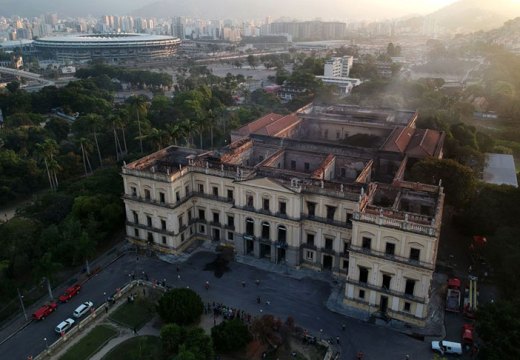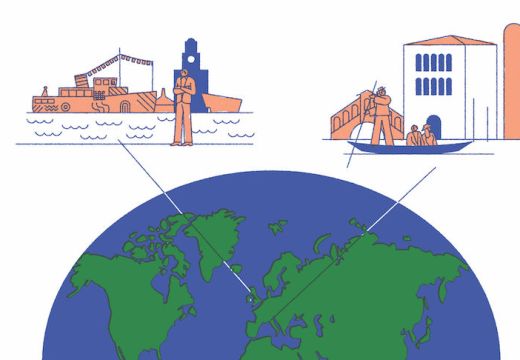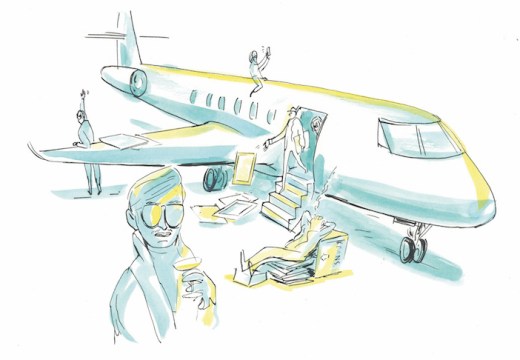Why are we drawn to particular objects and people? How do we experience these affinities in our natural world and other environments? The 33rd Bienal de São Paulo explores how we respond to art. Its title, ‘Affective Affinities’, fuses the Romantic testimonies of Goethe’s Elective Affinities, published in 1809, and the lesser-known but influential critic and activist Mário Pedrosa, whose ideas on Gestalt and perception revolutionised post-war art and modernism in Brazil. Both writers give the event’s chief curator Gabriel Pérez-Barreiro a chance to consider our openness and attentiveness to the relationships between different artworks and their environments.
The Bienal de São Paulo was launched in 1951 to show off the depth of the country’s artistic scene and the fast pace of its industrialisation. Hoping to reinvigorate its long-standing history of thematic displays, Pérez-Barreiro offers an alternative model calling upon a set of seven artists-cum-curators, more than half of them from Latin America. All were granted freedom to organise group exhibitions and invite artists in dialogue with their own work, encouraging affinities among diverse artworks. These installations were developed independently, with the intention to eliminate any predetermined hierarchies among art-world practitioners. Additionally, 12 individual projects highlighting the work of Latin American artists are presented by Pérez-Barreiro.

Installation view of Antonio Ballester Moreno’s exhibition at the 33rd Bienal de São Paulo, ‘Affective Affinities’, 2018. © Pedro Ivo Trasferetti/Bienal de São Paulo Foundation
The swell of hand-crafted clay mushrooms greeting visitors at the biennial’s entrance in Antonio Ballester Moreno’s Vivam os campos livres (Long Live the Free Fields) (2018), created in collaboration with local São Paulo schools, conveys the unseen networks and processes that penetrate the earth and activate organic growth, in his section ‘common/sense’. Nearby, Mark Dion’s Field Station: Ibirapuera Park (2018) is a growing laboratory or naturalist encampment of bird drawings, botanical lists, and ephemeral objects gathered from the urban environs of Ibirapuera Park. Another assemblage – albums and geometry exercises put together by Friedrich Fröbel (1782–1852), the German pioneer of kindergarten and early education – offers theories about the building blocks of creativity, especially during childhood.
Surprising alliances are further explored in a recording of a lumbering oak tree slowly forced through a Dutch living room by Roderick Hietbrink (The Living Room (2011)), and the odd appearance of splattered eggs gently rocked off a table in Paola Sferco’s three-channel video installation La respuesta de las cosas (The Answer of Things). Both are presented in Claudia Fontes’ densely curated section, ‘The Slow Bird’. For Fontes, the bird’s aerial perception and ability to change speed during flight provides an alternative way of ‘being in the world’ – one that we are asked somehow to replicate as spectators within Oscar Niemeyer’s cavernous, winding pavilion. Fontes’ own contribution to this section is a vitrine of porcelain fragments, wrapped in muslin and labelled with words from a detective story commissioned from the writer Pablo Martín Ruiz.

Installation view of Mamma Andersson’s exhibition at the 33rd Bienal de São Paulo, ‘Affective Affinities’, 2018. © Pedro Ivo Trasferetti/Bienal de São Paulo Foundation
The photographer Sofia Borges adds a dramatic dimension to her section, ‘The infinite history of things or the end of the tragedy of one’. In this installation, arranged against a backdrop of heavy curtains, Borges presents her exploration of ‘work flow’: while some artworks on view pass through multiple artists’ hands in the act of creation, others are exchanged for new ones throughout the course of the show. Most compelling are the painterly ‘images of the unconscious’ by art therapy patients from Rio de Janeiro’s National Psychiatric Center. In the company of Leda Catunda’s layered patchwork fabrics or Sarah Lucas’s amorphous sculptures, these beguiling images explore how archetypal forms recur through time and place. Other works by so-called ‘outsider’ artists, such as Dick Bengtsson and Henry Darger, are also displayed in Mamma Andersson’s section, ‘Stargazar II’.
This hybrid curatorial approach succeeds in encouraging unexpected conversations, clusters and stark divisions. Moreover, such unsystematic latitude has surprising cohesiveness and resists any facile comparisons to Brazil’s current instability. This year’s edition of the Bienal de São Paulo is a reminder that our personal affinities often guide our investigations, our minds perceive form differently, and our childhoods deserve greater attention.
The 33rd Bienal de São Paulo, ‘Affective Affinities’, is at Ciccillo Matarazzo Pavilion, Ibirapuera Park, São Paulo, until 9 December.
Unlimited access from just $16 every 3 months
Subscribe to get unlimited and exclusive access to the top art stories, interviews and exhibition reviews.














![Masterpiece [Re]discovery 2022. Photo: Ben Fisher Photography, courtesy of Masterpiece London](http://www.apollo-magazine.com/wp-content/uploads/2022/07/MPL2022_4263.jpg)
It’s time for the government of London to return to its rightful home